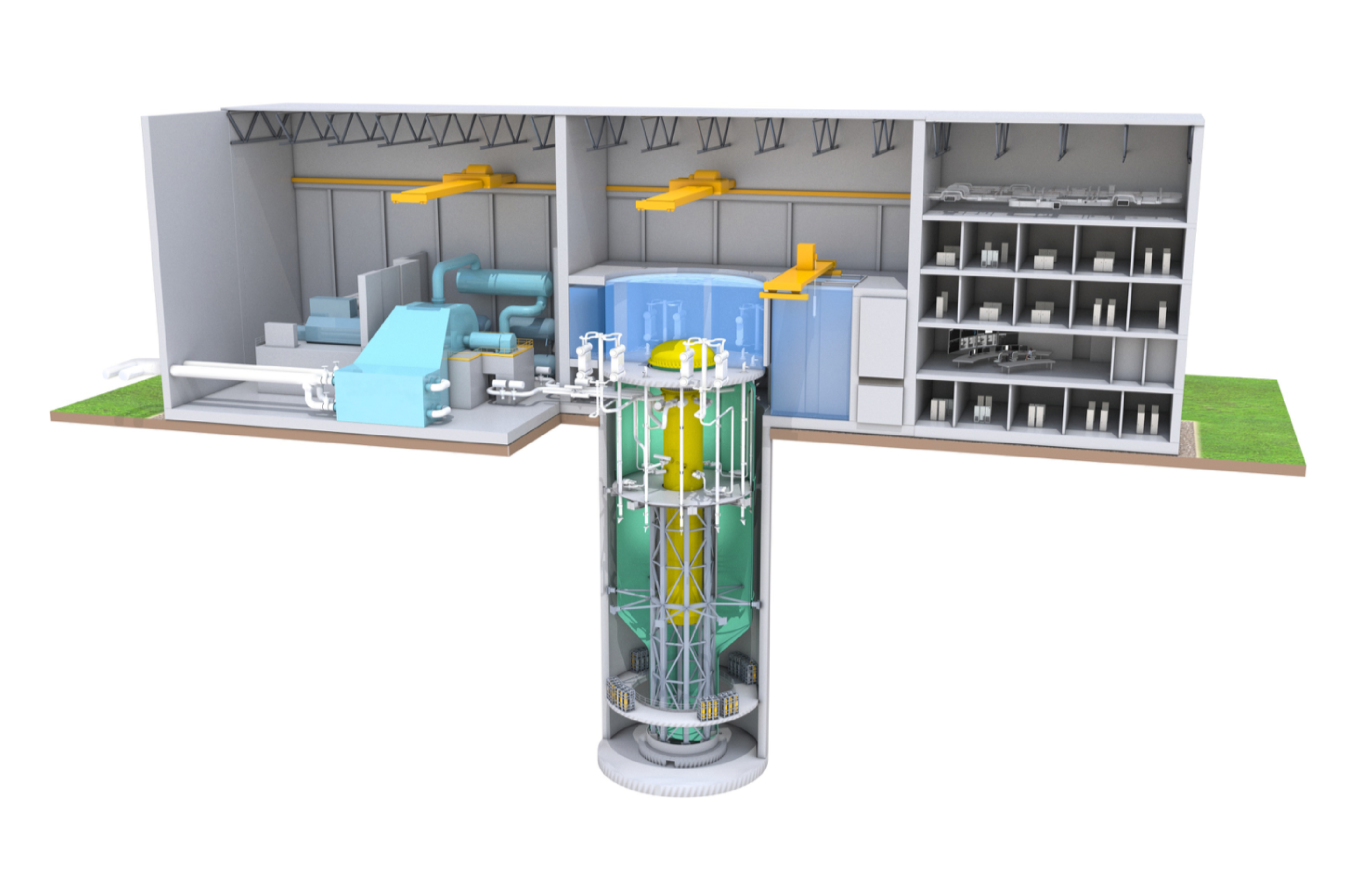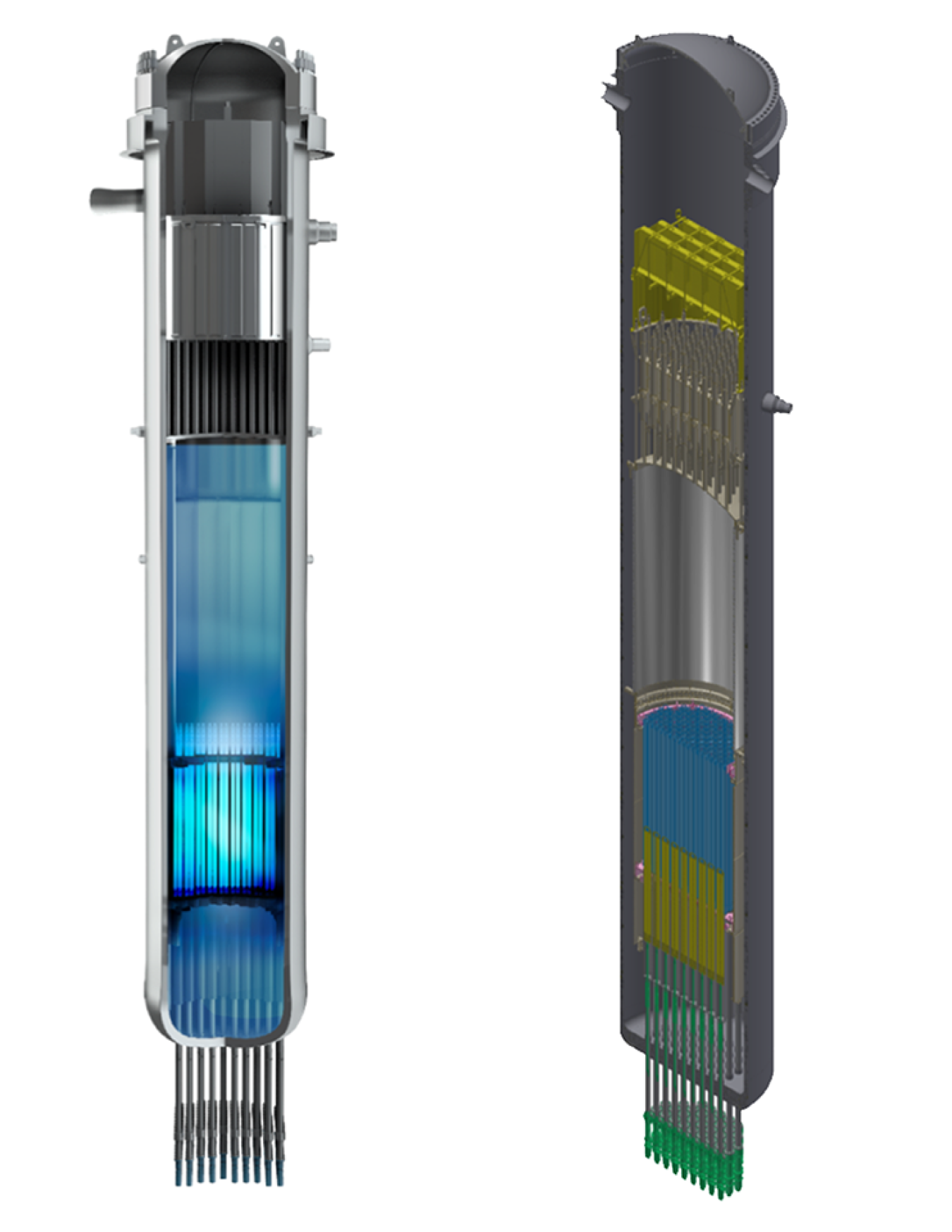
BWRX-300 small modular reactor.
GE Hitachi (GEH) is expanding its nuclear portfolio by developing a smaller and simplified version of its licensed Economic Simplified Boiling Water Reactor (ESBWR). The BWRX-300 design is the ONLY boiling water small modular reactor (SMR) under development in the United States. It recently began the licensing process with the Nuclear Regulatory Commission and is one of a handful of new reactor technologies that could be on the market within the decade.
With its new SMR design, GEH is looking to reduce plant size by 90% compared to traditional large-scale boiling water reactors to significantly reduce construction costs.
How Does the BWRX-300 SMR Work?
The compact SMR design is a 300-megawatt electric light water reactor that is based on proven and licensed boiling water reactor technology that was previously supported through the U.S. Department of Energy's Nuclear Power 2010 program. The BWRX-300 will produce steam inside the reactor pressure vessel to greatly reduce the complexity and size of the plant.
The SMR removes virtually all of the systems needed to support a large-scale reactor, with the exception of the isolation condenser system. This key system will remain its original size to optimize its performance in the much smaller BWRX-300. The isolation condenser converts steam to liquid, initiating natural circulation and passive cooling. The addition of water to the isolation condenser pools enables the indefinite cooling of the reactor’s components. This enhanced feature allows the reactor to maintain optimal reactor pressure and temperatures for seven days without power or operator intervention during off-normal events.

Other key benefits:
- Passive safety cooling
- Simplified design
- Reduced footprint
- Established supply chain
- Factory-built system
- Flexible baseload/load following
Projected Advantages
According to GEH, the BWRX-300 has the potential to greatly reduce overall project risks and total capital costs. With its underground containment and smaller scale, the SMR design is expected to reduce the amount of concrete needed and significantly cut capital costs when compared to current reactor designs. It will employ proven technology, common construction methods, and an established supply chain that could accelerate its development and deployment. As a smaller project, the BWRX-300 construction process could also keep a steady workforce between builds and improve knowledge transfer to help increase the chances of a quicker turnaround.
What’s Next?
GEH is expecting an expedited licensing process, since the SMR is based on the ESBWR design, which has already been cleared. The company anticipates the BWRX-300 to enter commercial operation as early as 2027.
